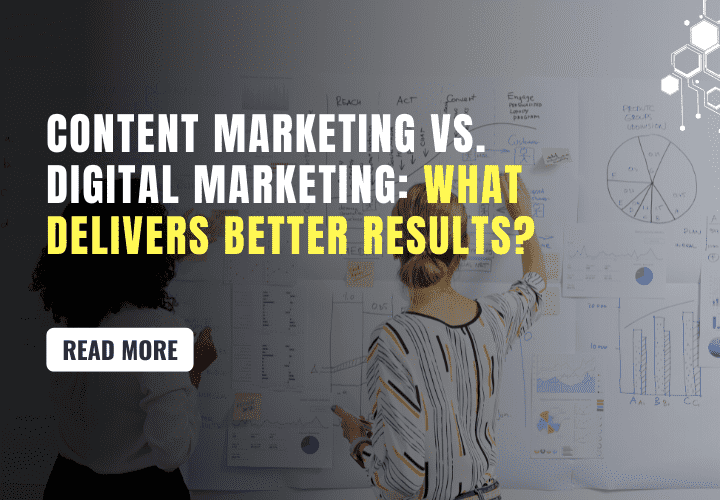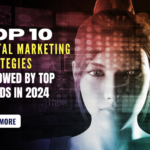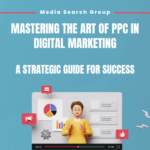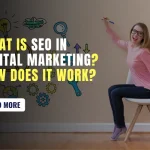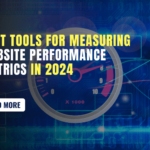Content Marketing vs. Digital Marketing: What Delivers Better Results?
In the modern internet age, businesses are always looking for the best ways to reach their customers. Two popular approaches often come up in these discussions: content marketing and digital marketing, but what exactly are these strategies? How do they differ? And most importantly, which one gives better results?
This blog post will dive deep into content marketing and digital marketing. We will look at what each strategy involves, its pros and cons, and how they perform in real-world situations. By the time it is all over, you will know exactly which strategy might be the most effective for your company’s objectives.
What Is Content Marketing?
Content marketing is all about creating and sharing valuable information with your target audience. The goal isn’t to directly sell products or services. Instead, it aims to build trust and relationships with potential customers over time.
“The content marketing market is expected to reach a valuation of approximately $600 billion by 2024.”
Key elements of content marketing include:
- Blog posts
- Videos
- Podcasts
- Infographics
- E-books
- Whitepapers
The idea is to provide helpful, interesting, or entertaining content that your audience wants to consume. This approach helps position your brand as an expert in your field and keeps people coming back for more.
Pros and Cons of Content Marketing:
Let’s weigh the advantages and disadvantages of content marketing:
Pros:
- Builds trust and credibility
- Improves brand awareness
- Can drive organic traffic through SEO
- Creates lasting value
- Can be cost-effective in the long run
“Content is used in marketing strategies by 90% of marketers.”
Cons:
- Takes time to see the results
- Requires consistent effort
- Can be challenging to measure ROI
What Is Digital Marketing?
Digital marketing, on the other hand, is a broader term. It covers all marketing efforts that use electronic devices or the internet. This includes content marketing, but it also encompasses many other strategies.
“The market for digital advertising and marketing is expected to grow from its estimated $667 billion in 2024 to $786.2 billion in 2026.”
Some common digital marketing tactics are:
- Search Engine Optimization (SEO)
- Pay-per-click advertising (PPC)
- Social media marketing
- Email marketing
- Mobile Marketing
- Display advertising
Digital marketing aims to reach potential customers through various online channels. It often focuses on driving specific actions, like making a purchase or signing up for a newsletter.
Pros and Cons of Digital Marketing:
Now, let’s look at the upsides and downsides of digital marketing:
Pros:
- Can produce quick results
- Offers precise targeting options
- Provides measurable outcomes
- Allows for real-time campaign adjustments
- Reaches a wide audience
Cons:
- Can be expensive, especially for competitive keywords.
- Requires ongoing investment
- May face ad fatigue or banner blindness
- Can be affected by algorithm changes
- May feel impersonal to some audiences
Key Differences Between Content Marketing and Digital Marketing
1. Scope
Content marketing is a specific strategy within the larger field of digital marketing. While all content marketing is digital marketing, not all digital marketing is content marketing.
2. Goals
Content marketing primarily aims to build long-term relationships and brand loyalty. Digital marketing often has more immediate goals, like increasing website traffic or boosting sales.
3. Approach
Content marketing takes a softer approach, providing value to the audience without pushing for immediate action. Digital marketing can be more direct, often including clear calls to action.
4. Timeframe
Content marketing typically takes longer to show results but can have lasting impacts. Digital marketing strategies like PPC can produce quicker results but may require ongoing investment.
5. Metrics
Content marketing often measures success through engagement rates, time spent on a page, and return visitors. Digital marketing might focus more on click-through rates, conversion rates, and ROI.
Measuring Success: Key Metrics for Content Marketing and Digital Marketing
To truly understand which strategy delivers better results, we need to look at how success is measured for each approach. Let’s dive deeper into the key metrics for both content marketing and digital marketing, along with examples of how to calculate and interpret these metrics.
1. Content Marketing Metrics
-
Engagement Rate
Engagement rate measures how much your audience interacts with your content. It includes likes, shares, comments, and time spent on the page.
Example: Let’s say you posted a blog article that received 1000 views, 50 likes, 30 shares, and 20 comments.
Calculation: (50 + 30 + 20) / 1000 = 0.10 or 10% engagement rate
Interpretation: A 10% engagement rate is generally considered good. It means your content is resonating with your audience and encouraging interaction.
Time spent on the page is another important engagement metric. If your average time on the page for blog posts is 2 minutes, but a particular post has an average time of 4 minutes, it indicates that this content is especially engaging.
-
Organic Traffic
This metric measures the number of visitors coming to your site through unpaid search results.
Example: Your website analytics show that last month, you had 10,000 total visitors, of which 6,000 came from organic search.
Calculation: (6000 / 10000) * 100 = 60% organic traffic
Interpretation: Having 60% of your traffic come from organic search is excellent. It means your content is well-optimized for search engines and is attracting visitors naturally.
-
Lead Quality
This metric assesses how well your content attracts potential customers who are likely to convert.
Example: Your latest ebook generated 100 downloads. Of these, 20 people requested a product demo, and 5 became customers.
Calculation: Lead-to-Customer Conversion Rate = (5 / 100) * 100 = 5%
Interpretation: A 5% lead-to-customer conversion rate is quite good. It indicates that your content is attracting qualified leads who are interested in your product or service.
-
Brand Awareness
This metric measures how familiar your target audience is with your brand. It can be tracked through various means, including:
- Direct traffic to your website
- Brand name search volume
- Social media mentions
Example: In January, your brand name was searched 1000 times on Google. In June, it was searched 1500 times.
Calculation: (1500 – 1000) / 1000 * 100 = 50% increase in brand awareness
Interpretation: A 50% increase in brand name searches indicates growing brand awareness. Your content marketing efforts are likely contributing to making your brand more recognizable.
-
Customer Retention
This metric shows how well your content keeps existing customers engaged and loyal.
Example: You have 1000 customers at the start of the year. By the end of the year, 800 of these customers are still with you.
Calculation: (800 / 1000) * 100 = 80% customer retention rate
Interpretation: An 80% customer retention rate is generally considered good. If you notice that customers who engage with your content have a higher retention rate, it indicates that your content marketing is effectively supporting customer loyalty.
2. Digital Marketing Metrics
-
Click-Through Rate (CTR)
CTR measures the percentage of people who click on your ad or link after seeing it.
Example: Your Google Ads campaign showed your ad 10,000 times (impressions), and it received 300 clicks.
Calculation: (300 / 10000) * 100 = 3% CTR
Interpretation: The average CTR for Google Ads across all industries is about 2%, so a 3% CTR is above average. This suggests your ad copy and targeting are effective.
-
Conversion Rate
This metric shows the percentage of visitors who take a desired action, like making a purchase or filling out a form.
Example: Your landing page received 1000 visitors, and 50 of them made a purchase.
Calculation: (50 / 1000) * 100 = 5% conversion rate
Interpretation: A 5% conversion rate is generally considered good for e-commerce. If you’re in B2B, even a 1% conversion rate can be acceptable. This metric helps you understand how effective your digital marketing efforts are at driving desired actions.
-
Cost Per Click (CPC)
CPC measures how much you pay for each click on your digital ads.
Example: You spent $500 on a Facebook ad campaign that generated 250 clicks.
Calculation: $500 / 250 = $2 CPC
Interpretation: The interpretation of CPC depends on your industry and the platform you are using. For Facebook ads, a $2 CPC is on the higher side for many industries. If your conversion value is higher than your CPC, your campaign is likely profitable.
-
Return on Ad Spend (ROAS)
ROAS shows the revenue generated for every dollar spent on advertising.
Example: You spent $1000 on a Google Shopping campaign that generated $5000 in sales.
Calculation: $5000 / $1000 = 5:1 ROAS
Interpretation: A 5:1 ROAS means you are earning $5 for every $1 spent on advertising, which is generally considered good. However, the ideal ROAS varies depending on your profit margins and business model.
-
Customer Acquisition Cost (CAC)
CAC measures the total cost of acquiring a new customer through your digital marketing efforts.
Example: You spent $10,000 on digital marketing campaigns in a month and acquired 100 new customers.
Calculation: $10,000 / 100 = $100 CAC
Interpretation: Whether a $100 CAC is good or not depends on your customer’s lifetime value (CLV). If your average CLV is $500, then a $100 CAC is acceptable. The key is to ensure your CAC is significantly lower than your CLV.
Comparing Content Marketing and Digital Marketing Metrics
While these metrics are often categorized separately, many of them can and should be applied to both content marketing and digital marketing efforts. For example:
- Engagement rate can be measured for both blog posts (content marketing) and social media ads (digital marketing).
- Conversion rate is crucial for both strategies, whether you are converting blog readers into email subscribers or ad viewers into customers.
- Customer retention can be influenced by both your ongoing content efforts and your targeted digital marketing campaigns.
The key difference often lies in the timeframe and attribution. Content marketing metrics typically measure longer-term, cumulative effects, while digital marketing metrics often provide more immediate, directly attributable results.
How Can Digital Marketing Enhance Content Marketing Efforts?
Increased Visibility Through SEO
Digital marketing techniques, particularly Search Engine Optimization (SEO), can help your content reach a wider audience.
By optimizing your content with relevant keywords, meta descriptions, and title tags, you increase its chances of ranking higher in search engine results. This means more people will discover and engage with your content organically.
For example, if you have written a comprehensive guide on “Small Business Financing Options,” proper SEO can help it appear when entrepreneurs search for related terms, driving targeted traffic to your content.
Amplified Reach via Paid Advertising
Paid advertising, a key component of digital marketing, can give your content an immediate boost in visibility. Platforms like Google Ads, Facebook Ads, or LinkedIn Ads allow you to promote your best content pieces to a highly targeted audience.
Let’s say you have created an in-depth whitepaper on the “Future of AI in Healthcare.” You could use LinkedIn Ads to promote this content directly to healthcare professionals and tech industry leaders, ensuring your valuable content reaches the most relevant audience.
Enhanced User Experience Through Web Design
Digital marketing encompasses web design and user experience (UX) optimization. A well-designed website with intuitive navigation can significantly improve how users interact with your content.
This can lead to longer time on the page, lower bounce rates, and higher engagement rates—all of which are important content marketing metrics.
Personalized Content Delivery
Digital marketing tools and technologies enable personalized content delivery. By leveraging data analytics and marketing automation, you can serve different content to different audience segments based on their interests, behaviors, or stage in the buying journey.
For instance, a new visitor to your site might see a general overview blog post, while a returning visitor who’s shown interest in a specific product might be served a detailed case study related to that product.
Real-Time Performance Tracking and Optimization
Digital marketing provides robust analytics tools that allow you to track the performance of your content in real-time.
This data can help you understand which types of content resonate best with your audience, allowing you to continually refine your content marketing strategy.
Multi-Channel Content Distribution
Digital marketing strategies like social media marketing and email marketing provide additional channels for distributing your content. This multi-channel approach ensures your content reaches your audience wherever they are, increasing its overall impact.
Case Studies: Content Marketing Success Stories
1. Blendtec’s “Will It Blend?” Video Series
Blendtec, a blender manufacturer, created a series of videos showing their blenders pulverizing various objects. This quirky content went viral, significantly increasing brand awareness and sales.
Results:
- 700% increase in blender sales
- YouTube channel with over 885,000 subscribers
- Millions of views across social media platforms
2. HubSpot’s Comprehensive Marketing Resources
HubSpot offers a wealth of free marketing resources, including blog posts, e-books, and courses. This positions them as a thought leader in the marketing industry.
Results:
- Over 7 million monthly blog visitors
- 200,000+ academy students
- Consistent year-over-year revenue growth
Case Studies: Digital Marketing Success Stories
1. Airbnb’s Instagram Marketing
Airbnb leverages user-generated content on Instagram to showcase unique travel experiences.
Results:
- Over 5 million Instagram followers
- High engagement rates on posts
- Increased bookings through the platform
2. Dollar Shave Club’s Video Advertising
Dollar Shave Club’s humorous video ad went viral, leading to explosive growth for the startup.
Results:
- 12,000 new customers within 48 hours of the video launch
- Millions of views across social media
- Eventual acquisition by Unilever for $1 billion
Comparing ROI: Content Marketing vs. Digital Marketing
When it comes to Return on Investment (ROI), both content marketing and digital marketing can be effective. However, the nature of the return differs:
Content Marketing ROI:
- Often takes longer to materialize
- Can provide compounding returns over time
- May be harder to directly attribute to sales
- Can lead to long-term customer relationships
Digital Marketing ROI:
- Can show quicker returns
- Easier to track and attribute to specific campaigns
- May require ongoing investment to maintain results
- Can be more directly tied to immediate sales or leads
Studies have shown that content marketing costs 62% less than traditional marketing and generates about 3 times as many leads. However, digital marketing techniques like PPC can drive immediate traffic and conversions.
The key is to understand that these strategies often work best when used together, rather than choosing one over the other.
Integrating Content Marketing and Digital Marketing
While we have been comparing content marketing and digital marketing, the truth is that they work best when integrated. Here’s how you can combine these strategies for maximum impact:
1. Use SEO in Your Content
Create content that targets specific keywords your audience is searching for. This combines the trust-building aspect of content marketing with the visibility benefits of SEO.
2. Promote Content Through Paid Advertising
Use digital advertising to boost the visibility of your best content pieces. This can help your content reach a wider audience more quickly.
3. Repurpose Content for Different Channels
Turn blog posts into social media content, videos, or infographics. This allows you to leverage your content across various digital marketing channels.
4. Use Content in Email Marketing
Share your best content pieces in your email newsletters. This combines the relationship-building power of content with the direct communication of email marketing.
5. Create Content Based on PPC Data
Use the insights from your PPC campaigns to inform your content creation. If certain keywords are performing well in ads, create content around those topics.
Finding the Right Balance Between Combining Digital and Content Marketing
In the debate of content marketing vs. digital marketing, there’s no clear winner. Both strategies have their strengths and can deliver impressive results when executed well.
The key to success lies in finding the right balance for your specific business needs. Most successful companies use a mix of both strategies, leveraging the strengths of each to create a comprehensive marketing approach.
Remember:
- Content marketing builds trust, establishes authority, and creates long-term value.
- Digital marketing offers precise targeting, quick results, and measurable outcomes.
By combining these approaches, you can create a powerful marketing strategy that attracts, engages, and converts your target audience.
Latest posts by Vijaya Tyagi (see all)
Important Tips & Tactics to Boost Your Website Reputation!! - October 16, 2025
14 Years, Thousands of Campaigns, Countless Stories – And We’re Just Getting Started - September 29, 2025


